TikTok for Business: Your Ultimate Guide to Winning in 2025
TikTok for Business: Your Ultimate Guide to Winning in 2025
Let’s be honest. You’ve probably been sitting there, scrolling through your phone during a lunch break, and you’ve fallen into the TikTok rabbit hole. One minute you’re watching a golden retriever steal a slice of pizza, the next you’re learning a 15-second recipe for feta pasta, and then suddenly, you see it: a video from a small business, a local candle maker, a plumber, a life coach, with millions of views.
And the question hits you like a ton of bricks: Should my business be on TikTok?
It’s a thought that mixes excitement with a healthy dose of dread. You see the potential, the raw, unfiltered engagement, the sheer number of people glued to their screens. But you also see the chaos. The dancing, the memes, the trends that seem to change every 48 hours. It feels like a party you weren’t invited to, and you’re not sure if you even know the dress code.
You’re not alone. Business owners worldwide are asking the same questions. Is this just a fad for Gen Z? Is it a colossal waste of time? Can you make money, or will you just end up embarrassing yourself trying to do the latest viral dance?
If you’re wrestling with these questions, take a deep breath. This is your definitive guide. We’re going to cut through the noise and answer every single question you have about using TikTok for business. We'll cover the good, the bad, the costly, and the incredibly profitable.
By the time you finish reading this article, you will know exactly if, why, and how to leverage TikTok for your business. So, grab a coffee, and let’s dive in.
The Elephant in the Room: Is TikTok for Business Really Worth It?
Let's tackle the biggest question first, the one that’s probably keeping you on the fence: Is investing time and energy into TikTok for your business worth the effort?
The short answer is: It depends on your goals, but for the vast majority of businesses, the answer is a resounding yes.
The longer, more nuanced answer is that TikTok represents the single greatest opportunity for organic reach that we’ve seen on a social media platform in over a decade. Remember the early days of Facebook, when thousands could see a simple post of your followers without paying a dime? That’s the kind of potential TikTok offers right now, in 2025. But it's not just about reach; it's about connection.
The Sheer Scale is Mind-Boggling
First, let's talk numbers. TikTok isn't some niche app for teenagers anymore. It boasts over 1.5 billion monthly active users globally. What’s more, the demographics are broadening at a staggering rate. While it’s still incredibly popular with Gen Z, a massive chunk of its user base is now Millennials, Gen X, and even Baby Boomers. These aren't just kids; they're consumers with purchasing power. They’re homeowners, parents, professionals, and entrepreneurs. The odds are, no matter how niche your business is, a segment of your audience is on TikTok.
The Magic of the "For You" Page
The secret sauce of TikTok is its algorithm, which powers the "For You" Page (FYP). Unlike Instagram or Facebook, which heavily prioritize content from accounts you already follow, the FYP is a discovery engine. It serves you content it thinks you will like, regardless of who created it.
This is a game-changer for small businesses.
On other platforms, you start with zero followers and have to claw your way to visibility. On TikTok, your very first video, if it’s engaging enough, has the potential to be served to thousands, or even millions, of users who have never heard of you. The algorithm gives every single video a chance to go viral based on its merit—how long people watch it, if they like it, comment, or share it. It’s the great equalizer of digital marketing.
Real-World Example: Think of Scrub Daddy. It was a successful product from Shark Tank, but its TikTok presence propelled it into a cultural phenomenon. They don't just post ads for a sponge. They create content where the sponge is a character, participating in trends, cleaning up satisfying messes, and engaging with users in a funny, relatable way. They built a community around a cleaning product, leading to a massive increase in brand awareness and sales.
Does TikTok Help Small Businesses?
Absolutely. You could argue that small businesses have the most to gain. Why? Because TikTok values authenticity over big budgets.
A multi-million dollar corporation can spend a fortune on a slick, polished ad, and it will often perform worse than a video of a small business owner passionately explaining how they make their product, filmed on an iPhone in their garage.
Users on TikTok are tired of traditional advertising. They crave connection, stories, and behind-the-scenes glimpses. As a small business, this is your superpower. You can show:
The Process: A baker kneading dough, a woodworker carving a piece of furniture, a programmer writing a tricky piece of code.
The People: The faces behind the brand, the team culture, the "day in the life" stories.
The Passion: Why you started your business, the challenges you’ve overcome, the problems you solve for your customers.
This kind of content builds trust and community in a way that a glossy ad never could. When a customer feels like they know you, they’re not just buying a product; they’re supporting a person. That’s a level of loyalty that money can’t buy.
So, is it worth it? If you're willing to shift your mindset from "selling" to "sharing" and from "advertising" to "entertaining," then yes. It's more than worth it. It could be the most impactful marketing decision you make all year.
Demystifying the Jargon: What is "TikTok for Business," Really?
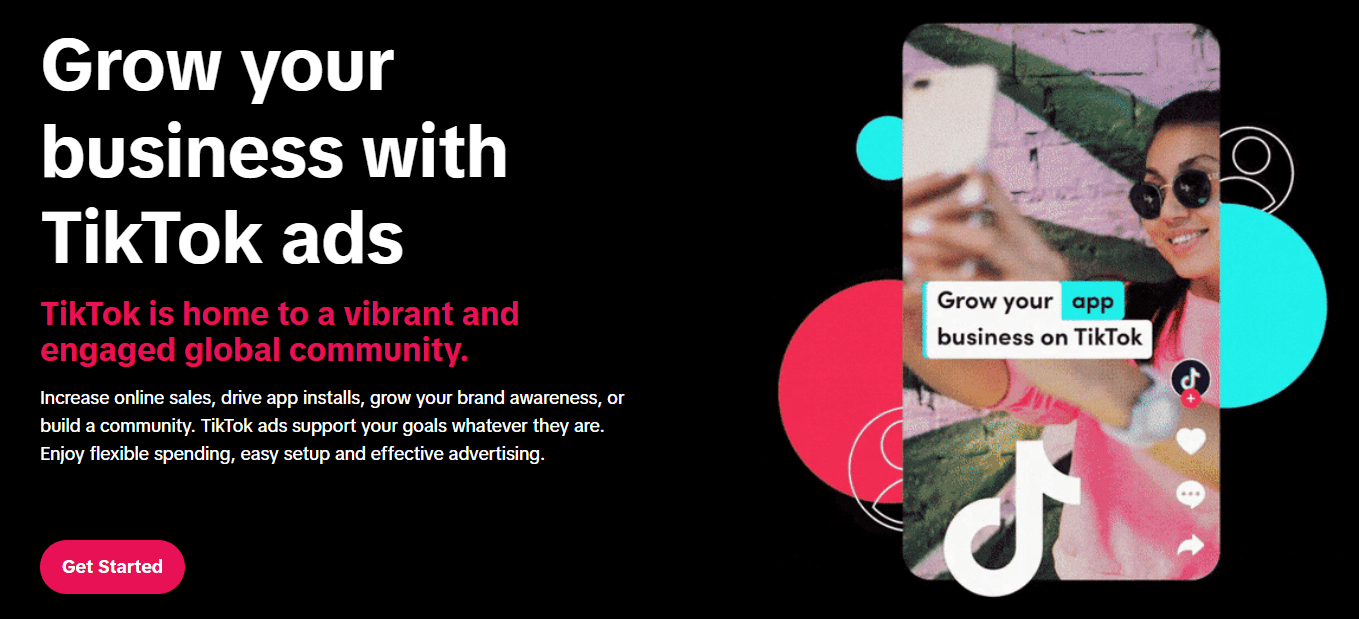
Okay, so you're intrigued. But what does "using TikTok for business" actually mean in practical terms? Is there a special, secret version of the app? Not exactly.
"TikTok for Business" is an umbrella term that covers all the tools, features, and strategies the platform offers to help companies market themselves. The cornerstone of this is the TikTok Business Account.
This brings us to a crucial distinction you need to understand. On TikTok, there are essentially two main types of accounts you can use: a Creator Account (sometimes called a Personal Account) and a Business Account.
Is a TikTok Business Account Different Than a Regular TikTok?
Yes, there are key differences, and choosing the right one is vital. Let’s break it down.
A Creator/Personal Account is the standard account everyone gets when they sign up. It’s designed for individual users and content creators. Its biggest perk is access to the full, massive library of commercial music. This means you can use any trending song from artists like Taylor Swift or Drake in your videos, which is a huge advantage for hopping on viral trends. Creators can also be eligible for monetization features like the Creator Fund (where TikTok pays you a small amount per view) and receive virtual "gifts" from followers during live streams.
A TikTok Business Account, on the other hand, is specifically designed for brands and companies. When you switch to a Business Account (which is free), you unlock a different set of tools.
Here’s a clear comparison to help you visualize the differences:
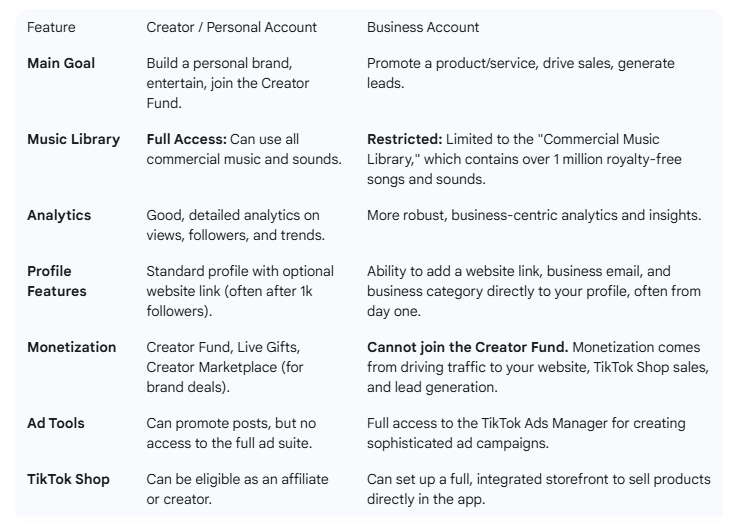
How Does TikTok Work for Businesses, Then?
If you can't use all the popular music and you can't get paid by the Creator Fund, how does it even work?
It works by shifting your objective. As a business, your goal isn't to get paid a few cents per thousand views from TikTok itself. Your goal is to leverage the platform's incredible reach to build an audience that you can then convert into customers.
Your TikTok strategy revolves around creating engaging content that funnels viewers toward a specific action:
Clicking the link in your bio to visit your website.
Shopping for your products directly in your TikTok Shop.
Sending you an email or DM to inquire about your services.
Simply becoming aware of your brand so they think of you when they need what you offer.
The Business Account is the vehicle that gives you the tools—the analytics, the profile links, the ad suite—to make that funnel as effective as possible. The main trade-off is the music library, but we'll discuss the workarounds for that later.
Let's Talk Money: The Costs and Earning Potential
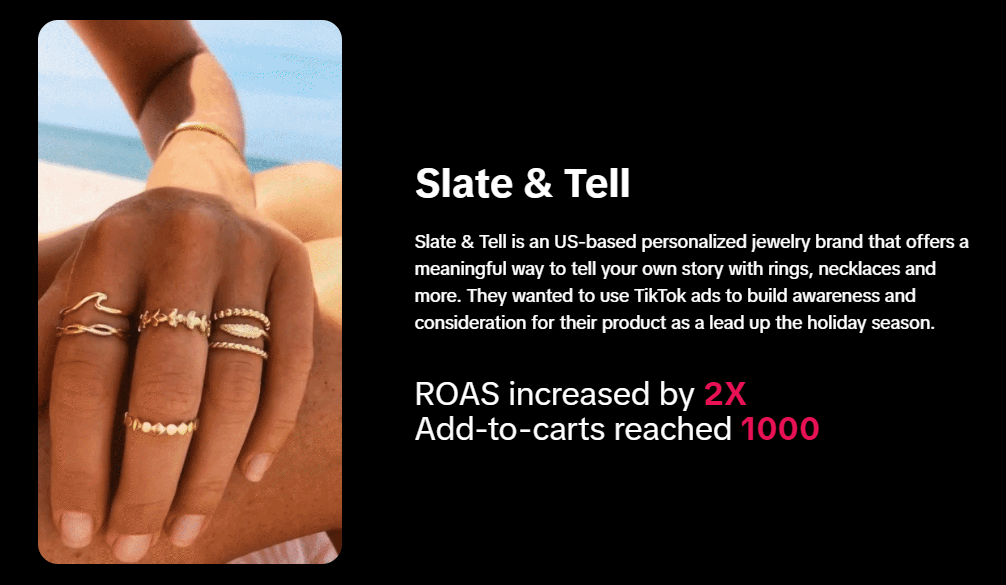
This is where the rubber meets the road. You’re running a business, and every decision has to have a potential return on investment (ROI). So, let's break down the dollars and cents of TikTok.
Is TikTok Free for Business? How Much Does it Cost?
Here’s the fantastic news: Setting up and maintaining a TikTok Business Account is 100% free.
You can switch your account type, access the business analytics, add your website link, and post as much content as you want without paying a single penny. The primary "cost" of using TikTok for business isn't monetary; it's an investment of time and creativity.
Your budget will be determined by your approach:
The DIY Approach (Cost: ~$0): You can run a highly successful TikTok account using just your smartphone and natural lighting. The platform's culture values authenticity, so a gritty, real video often performs better than a high-budget production. The cost here is your time to brainstorm, film, edit, and engage with comments.
The "Level Up" Approach (Cost: $50 - $500): This might involve investing in some basic equipment like a ring light for better lighting, an external microphone for clearer audio, and a simple tripod to hold your phone steady. You might also subscribe to a user-friendly video editing app like CapCut (which is owned by the same parent company as TikTok).
The Outsourcing Approach (Cost: $500 - $5,000+ per month): If you don't have the time, you can hire a social media manager, a content creator, or a marketing agency to run your TikTok account for you.
The Optional Cost: Running Ads. This is where you can start spending real money. Running ads on TikTok is, of course, not free. The beauty of the TikTok Ads Manager is its scalability. You can start a campaign with as little as $20 per day. These ads, known as "In-Feed Ads," appear natively on the For You Page as users scroll.
So, is running ads on TikTok worth it? It can be incredibly effective, especially for e-commerce brands. The key is to create ads that don't feel like ads. They should look and feel like regular, organic TikTok videos. A successful TikTok ad entertains or provides value first and sells second. If you can master that, the ROI can be phenomenal because you’re reaching a highly engaged audience that is already in a "discovery" mindset.
Do You Make Money on a TikTok Business Account?
This is a point of major confusion, so let's be crystal clear: TikTok Business Accounts are not eligible for the Creator Fund.
The Creator Fund is a pool of money TikTok uses to pay creators based on the number of views their videos get. You may have heard figures like "$0.02 to $0.04 per 1,000 views." While this is a nice bonus for full-time creators, it’s peanuts for a business. A video with 1 million views might earn you $20-$40 from the fund. A single sale of your product could be worth more than that.
So, how do businesses make money? They make money THROUGH TikTok, not FROM TikTok. Here are the primary monetization strategies:
Driving Website Traffic: This is the classic method. You create compelling content and use the "link in bio" to send people to your e-commerce store, service page, or blog. A viral video can translate into thousands of website visitors in a single day.
TikTok Shop: This is a powerful, integrated e-commerce solution. It allows you to tag products directly in your videos and have a shoppable tab on your profile. Users can browse and buy your products without ever leaving the app. It makes the path from discovery to purchase incredibly short and seamless. Is there a monthly fee for TikTok Shop? No, there is no monthly subscription fee. However, TikTok charges a commission or transaction fee on each sale. This fee can vary, so it's essential to check the current rates in your region, but it's a small price to pay for the direct access it provides to customers.
Lead Generation: If you're a service-based business (like a consultant, real estate agent, lawyer, or contractor), TikTok is a phenomenal lead-generation tool. You can create content that showcases your expertise, answers common customer questions, and builds trust. Interested viewers will then reach out via your DMs or the email button on your profile to inquire about your services.
Brand Awareness Leading to Indirect Sales: Sometimes the ROI isn't immediately trackable. A person might see your brand of hot sauce on TikTok today, not click, but then recognize it in the grocery store a week later and decide to buy it. TikTok excels at building this kind of top-of-mind brand awareness that leads to future sales across all your channels.
In summary, the cost to get started is virtually zero. The earning potential isn’t about getting paid for views, but about using the platform as a powerful engine to drive real, tangible business results.
The Uncomfortable Truth: Disadvantages and Risks
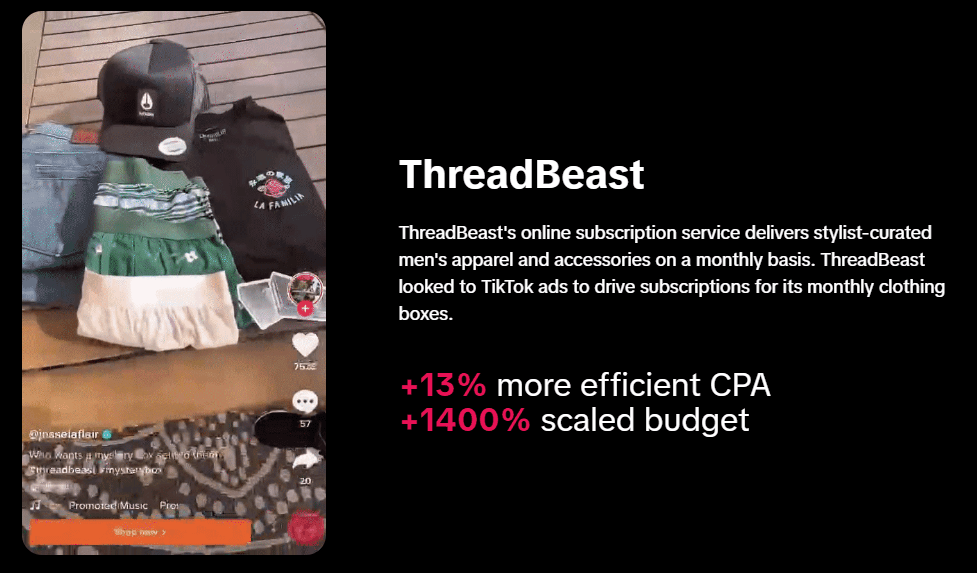
No platform is perfect. If you’re going to invest in TikTok, you need to go in with your eyes wide open. Being aware of the potential downsides allows you to plan for them and mitigate the risks.
What are the Disadvantages of a TikTok Business Account?
Let’s start with the specific drawbacks of the Business Account type itself.
The Limited Music Library: This is, by far, the biggest disadvantage. Because businesses are using the platform for commercial gain, TikTok restricts them to a library of royalty-free music to avoid massive copyright infringement issues. This means you often can't use the song that’s at the heart of the latest viral trend. It can feel like showing up to a party where everyone is doing the Macarena, and you're only allowed to do the Hokey Pokey.
The Workaround: Get creative! You can use the royalty-free sounds, many of which are designed to sound like trending audio. Better yet, create your original audio. A simple voiceover explaining your process or telling a story can be far more powerful than a trending song anyway. You can also use trending sounds that are "original audio" from other creators (not commercial music), but always be cautious.
The Perception of Being "Corporate": Some users might see the "Business Account" label and be immediately wary of your content, assuming it's just an ad.
The Workaround: Overcome this with authenticity. If your content is genuinely helpful, entertaining, or interesting, users won't care what your account type is. Your content's quality is what matters.
This naturally leads to a very common and anxiety-inducing question...
Does a TikTok Business Account Get Fewer Views?
This is the million-dollar question, and the internet is full of theories. The official answer from TikTok is no. The algorithm prioritizes high-quality, engaging content, regardless of whether it comes from a Personal or Business account.
However, the reality is a bit more complex. You could argue that Business Accounts indirectly face a hurdle that can lead to fewer views. Because you can't always use the top trending commercial audio, you miss out on the automatic boost that comes from participating in that specific trend. A video’s sound is a massive discovery tool on TikTok.
The Verdict: A great video from a Business Account will still outperform a mediocre video from a Creator account. Don't blame the account type for low views. Focus on improving your content. If you create a compelling video with a strong hook, good pacing, and a clear message, the algorithm will find an audience for it.
Broader Risks of Using TikTok for Your Business
Beyond the account type, there are platform-wide risks to consider:
It’s a Massive Time Sink: Creating good short-form video content is not as easy as it looks. Brainstorming, filming, editing, writing captions, and engaging with comments takes a significant amount of time. It's easy to get sucked in and lose hours.
The Comment Section Can Be Brutal: TikTok is a raw and unfiltered place. If you post something, you open yourself up to public criticism, trolls, and negative feedback. You need to have a thick skin and a plan for community management.
The Treadmill of Trends: The fast-paced nature of TikTok means trends come and go in a flash. Trying to keep up can be exhausting and can lead you to create content that feels forced or inauthentic to your brand.
Reputation Risk: A video can go viral for all the wrong reasons. A poorly thought-out joke, an insensitive comment, or a failed product demo can damage your brand's reputation overnight.
Is TikTok Safe for Business? From a practical, day-to-day operational standpoint, using TikTok is as safe as using any other major social media platform. You have control over your account, DMs, and comments. However, it's impossible to ignore the broader geopolitical conversations surrounding TikTok's parent company, ByteDance, and data privacy. While this is unlikely to affect your direct sales, it's a piece of the strategic landscape that businesses, particularly larger corporations, should be aware of.
Being aware of these disadvantages isn't a reason to avoid the platform. It's a reason to be strategic, thoughtful, and prepared.
The Ultimate "How-To" Guide for Small Businesses
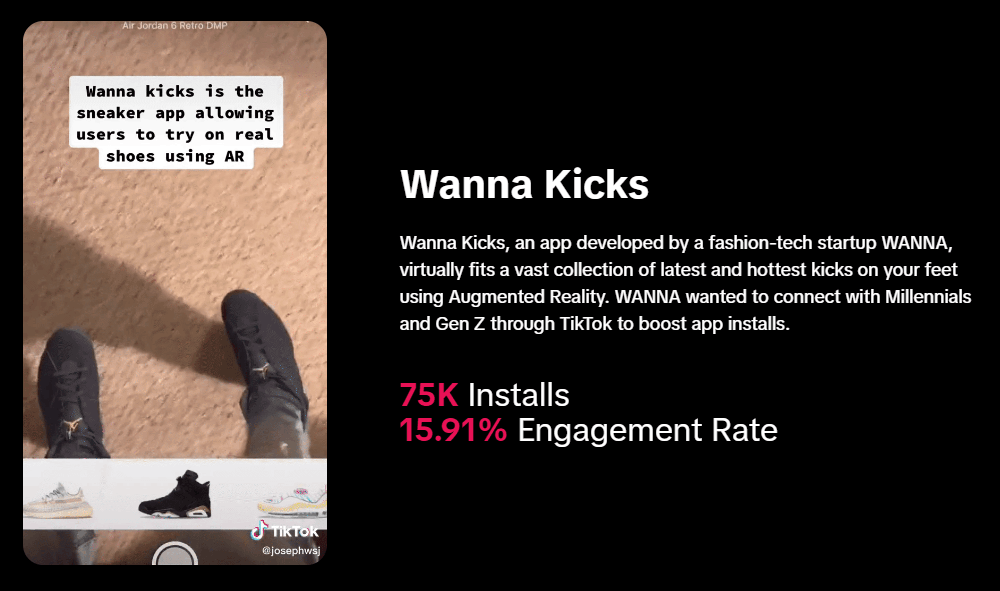
Ready to jump in? Let's get tactical. Here is a step-by-step guide to getting your small business set up and ready for success on TikTok.
Step 1: How to Set Up TikTok for Business
Getting the foundation right is crucial. It only takes about 15 minutes.
Download the App and Create a Profile: If you don't have one already, download TikTok from the App Store or Google Play. Sign up with an email address dedicated to your business.
Pick a Good Username: Make it your business name or something very close to it. You want to be easily searchable.
Switch to a Business Account: This is the most important step.
Go to your Profile page (the "Me" icon in the bottom right).
Tap the three lines in the top right corner to open Settings and privacy.
Tap on Account.
Tap on Switch to Business Account and follow the on-screen prompts. It will ask you to choose a category that best fits your business (e.g., "Clothing Brand," "Professional Services," "Restaurant").
Optimize Your Profile: Your profile is your digital storefront. Make it count.
Profile Photo: Use a high-quality version of your logo. It should be clear and recognizable even as a small circle.
Bio: You have 80 characters. Be clear, concise, and show some personality. What do you do? Who do you do it for? What makes you special?
Add Your Links: This is a key Business Account perk! Add a clickable link to your website and your business email address. This is your primary Call-to-Action (CTA).
Step 2: Crafting Your Content Strategy (Don't Just Post!)
The biggest mistake businesses make is just posting random videos. You need a plan. Don't worry, it doesn't need to be a 50-page document. Start with these core principles.
Find Your Niche and Your Vibe. You can't be everything to everyone. Are you funny and sarcastic? Inspirational and motivational? Educational and geeky? Your "vibe" should be an extension of your brand's personality.
The "3 E's" Content Pillars: Most successful TikTok accounts build their content around three pillars. Aim for a mix of all three.
Educate: Teach your audience something. This is the easiest place for any business to start.
A financial advisor: "3 common money mistakes people make in their 20s."
A skincare brand: "The correct order to apply your skincare products."
A software company: "One keyboard shortcut that will save you an hour a week."
Entertain: This is the heart of TikTok. Make people laugh, feel joy, or be amazed.
A coffee shop: "Behind the scenes of a clumsy barista on a Monday morning."
A pet store: Showcasing the funniest-looking animals in the shop.
A law firm: A humorous skit about common legal misconceptions (e.g., from TV shows).
Engage (or Inspire): Create content that builds community and tells your story.
A clothing brand: "Pack an order with me for a customer in Alaska!"
A non-profit: "Meet the person you helped with your last donation."
Any business: Use the "stitch" or "duet" feature to reply to another user's video, or answer a question from your comments in a new video.
The Golden Rule: Don't Sell, Tell Stories. People hate being sold to, but they love buying. Your content shouldn't be a commercial. Instead of saying, "Buy our amazing candle for $19.99," create a video showing the satisfying process of you pouring the wax, adding the fragrance, and packaging it with care. The story sells the candle for you.
Embrace the Lo-Fi Vibe. Put away the professional camera crew. TikTok users value authenticity. Videos shot on a phone, with natural lighting and minimal editing, often feel more real and trustworthy. Perfection is boring; personality is everything.
Step 3: Posting, Hashtags, and Analytics
Posting Cadence: Consistency is more important than frequency. Aim for 3-5 videos per week when you're starting.
Hashtag Strategy: Hashtags help the algorithm understand what your video is about. Use a mix of 3-5 hashtags:
Broad Hashtags: (#smallbusiness, #entrepreneur)
Niche Hashtags: (#handpouredcandles, #B2Bsaas, #plumbingtips)
Branded Hashtag: (#YourBusinessName)
Check Your Analytics: After a week or two, dive into your Business Suite analytics. See which videos got the most views, likes, and comments. What topics resonated? What time of day were your followers most active? Double down on what works and ditch what doesn't.
The Social Media Showdown: TikTok vs. The Giants
Your marketing resources are finite. You need to know where to place your bets. How does TikTok stack up against the established giants like Facebook and Instagram?
Is TikTok Better Than Facebook for Business?
This isn't about "better"; it's about "different." Using them together is the ultimate power move.
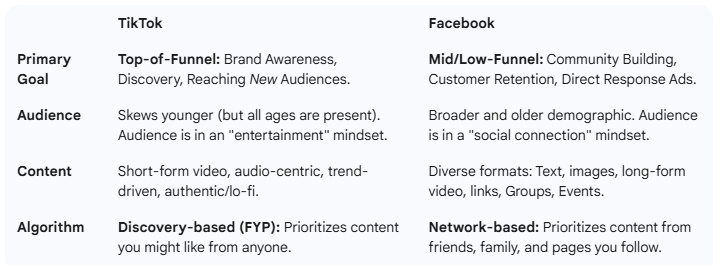
The Verdict: Use TikTok to get discovered by people who have never heard of you. Use Facebook to nurture the relationship with the audience you already have. They serve completely different, but equally important, functions in a modern marketing strategy.
Is Instagram or TikTok Better for Businesses?
This is the real heavyweight fight. Instagram's "Reels" is a direct response to TikTok's dominance. Many businesses wonder where they should focus their short-form video efforts.
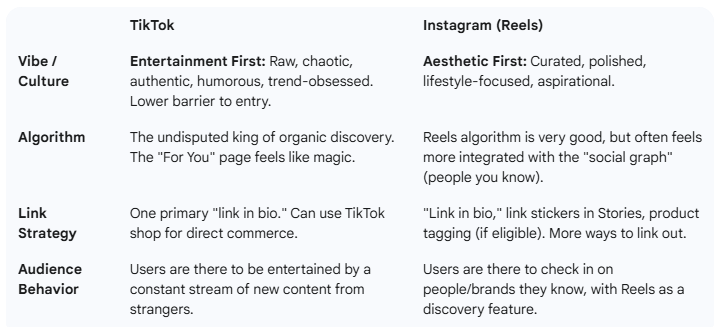
Why do people use TikTok instead of Instagram? Many users describe TikTok as a more relaxing, entertaining experience. It feels less performative and less about comparing your life to a curated ideal. It's a lean-back entertainment channel, whereas Instagram can feel like a lean-in social obligation.
The Verdict: If you have the resources, be on both. You can often repurpose the same video for both platforms. If you must choose one to start with, consider your brand's personality:
Choose TikTok if: Your brand has a strong personality, can embrace humor and trends, and relies on storytelling and process videos.
Choose Instagram if: Your brand is highly visual, aesthetic, and lifestyle-oriented (e.g., high fashion, luxury travel, design).
Your Burning Questions, Answered (A Final FAQ)
Let's rapid-fire through the remaining questions to make sure every stone is unturned.
How do I tell if my TikTok is Business or Personal? Easy. Go to your profile, tap the three lines in the top right for "Settings and privacy," then "Account." If it says "Switch to Personal Account," you are currently on a Business Account. If it says "Switch to Business Account," you're on a Personal/Creator account. Business accounts also often have their business category (e.g., "Marketing Agency") listed on their profile page.
Can I change my TikTok Business Account back to Personal? Yes, you can switch back at any time using the same menu. However, be warned: When you switch back to a Personal/Creator account, you will lose all the data and analytics you gathered as a Business Account.
Is it better to switch to a Business Account on TikTok? If you are a business with a product or service to sell, yes. The access to a link in your bio from day one, the robust analytics, and the Ads Manager are essential tools. The only reason to stay as a Creator account is if your primary monetization strategy is the Creator Fund and brand deals as an influencer, and you need the full commercial music library.
Why don't I use TikTok for my business? Let's rephrase this to "Why might you be hesitating?" Common reasons include:
"I don't have time." - Start small. Batch create 3-5 videos in one afternoon to cover the week. A video can be 15 seconds long.
"My audience isn't there." - Are you sure? With over 1.5 billion users, including a huge number of adults with disposable income, they probably are.
"I don't know what to post." - Start with the "Educate" pillar from Chapter 5. Answer the top 10 questions your customers always ask you. Each question is a video.
Which TikTok account is best for business? The Business Account. It’s designed for you.
Can I earn money directly on TikTok with a business account? Not from the Creator Fund. You earn money by driving sales and leads through the platform via your website, TikTok Shop, and DMs.
What are the main disadvantages of TikTok in general? It can be a time-sink, the fast pace of trends can be draining, and you open your brand up to public criticism in the comments. It requires a resilient and consistent approach.
The Final Takeaway
We’ve covered a lot of ground. We've dissected account types, budgets, strategies, and risks. So, what's the bottom line?
TikTok is not a magic bullet that will instantly solve all your marketing problems. It is, however, an unbelievably powerful tool that is currently rewriting the rules of digital marketing. It's a platform that rewards authenticity, creativity, and connection over big budgets and slick production. For small and large businesses alike, it offers a direct line to a massive, engaged, and diverse audience.
The learning curve might feel steep, and your first few videos might be cringeworthy. That’s okay. Everyone starts there. The key is to start.
The biggest risk for your business in 2025 isn't posting a bad TikTok video. The biggest risk is being too afraid to post one at all, while your competitors are building communities, telling their stories, and capturing the attention of your future customers.
So download the app. Spend an hour just scrolling the For You Page to get a feel for the language of the platform. Think about one question your customers always ask you, and film a simple 30-second video of yourself answering it.
Your next customer is out there, swiping through videos. It’s time to give them something to find.
Created with © Ako Digital



